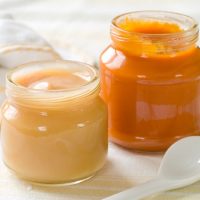While numerous medications are considered safe during breastfeeding, healthcare providers often recommend limiting their use when possible. For nursing mothers exploring alternative options, various natural approaches may offer support. Below are several remedies compiled from available resources.
It’s important to recognize that herbal solutions and natural therapies aren’t inherently risk-free for lactating individuals. Plants and botanicals can exert potent biochemical effects comparable to pharmaceutical products. Their interactions with breast milk composition and infant physiology require careful consideration.
Before incorporating any herbal treatment, caregivers should thoroughly verify its compatibility with breastfeeding through reliable medical sources. Consulting a qualified healthcare professional remains essential, as natural substances may carry undocumented risks or affect milk production unexpectedly.
Oral Rehydration Solutions: Preparation and Recommendations
For adults experiencing dehydration, replenishing fluids and electrolytes can often be achieved through a combination of beverages and sodium chloride sources, such as salted snacks. However, commercial oral rehydration formulas (e.g., Pedialyte) are typically advised for children and infants no longer breastfeeding, as these products are formulated to meet specific hydration needs. For nursing infants and young children, breastmilk remains the optimal choice for maintaining hydration and electrolyte balance.
Below is a simplified recipe to prepare an oral rehydration solution at home, adapted from established guidelines:
- Ingredients:
- 6 level teaspoons of granulated sugar
- ½ level teaspoon of table salt (sodium chloride)
- 1 liter of clean drinking water
This mixture balances glucose and electrolytes to aid fluid absorption, mimicking principles found in WHO-recommended formulations. While homemade solutions can serve as a temporary measure, commercial rehydration products are preferred for precise dosing and safety, particularly in pediatric cases. For severe dehydration or persistent symptoms, medical consultation is essential to determine if intravenous fluids or advanced treatments are required.
Note: Always verify ingredient measurements carefully, as deviations may compromise effectiveness or safety.
Safety of Homeopathic Remedies During Breastfeeding
While limited professional literature exists regarding the use of homeopathic medicines during lactation, current research and clinical observations suggest these remedies present negligible risk to infants. Homeopathic preparations, by definition, contain highly diluted forms of active substances, which minimizes systemic absorption and potential transmission through breast milk.
The fundamental principle of homeopathy—extreme dilution—ensures that remedies lack pharmacologically significant concentrations of their original components. This characteristic underpins their widespread perception as safe for breastfeeding mothers and infants, as the likelihood of adverse effects or interactions is considered exceedingly low.
Healthcare professionals specializing in homeopathy and lactation generally concur that these remedies are unlikely to compromise infant health when used appropriately. However, practitioners emphasize the importance of consulting qualified homeopaths or healthcare providers to ensure proper remedy selection and dosage, particularly when addressing specific maternal health concerns during nursing.
Vinegar Rinse for Itchy Nipple Relief
A diluted white vinegar solution can alleviate nipple discomfort by mixing one tablespoon of vinegar with approximately one cup of water. To apply, soak the affected nipple in the mixture for roughly a minute while leaning over the container, then slowly pour the solution over the area while positioned above a sink. This method often provides rapid symptom relief. Persistent nipple itching may indicate a thrush infection, necessitating medical evaluation for appropriate diagnosis and treatment.
Calcium and Magnesium Supplementation for Menstruation-Related Low Milk Supply
Some breastfeeding mothers observe reduced milk production between ovulation (mid-cycle) and the initial days of their menstrual period. This decline correlates with gradually decreasing blood calcium levels during this phase, which may directly impact milk supply in certain individuals. Calcium and magnesium supplementation has been reported to alleviate this issue while also reducing uterine cramping and premenstrual symptoms like fluid retention.
The optimal supplementation range spans 500–1500 mg of calcium paired with 250–750 mg of magnesium daily, with higher doses often yielding better results. Calcium absorption requires magnesium as a cofactor, making combined formulations (e.g., calcium-magnesium-zinc blends) essential for efficacy. Dietary habits influence dosage adjustments—diets rich in animal protein may necessitate higher supplementation, whereas vegetarian or vegan diets might require lower amounts. For doses exceeding 500 mg of calcium per day, divided intake throughout the day is recommended to maximize absorption efficiency.
Supplementation should ideally begin at ovulation and continue through the first few days of menstruation. For irregular cycles, initiating intake 14 days after the last menstrual period or maintaining daily supplementation ensures consistent support. Products like Bio Island Adult Milk Calcium, which combines calcium, magnesium, and vitamin D3, exemplify formulations designed to enhance bioavailability and address these physiological needs.
Non-Antibiotic Approaches for Managing Mastitis
Prioritizing rest and frequent nursing sessions can help alleviate mastitis symptoms, as the condition often signals the need for reduced physical activity. Skin-to-skin contact between mother and baby during breastfeeding promotes milk flow and supports recovery.
- Compress applications:
- Cold compresses between feedings reduce inflammation. Some mothers alternate with warm compresses applied briefly before nursing.
- Herbal poultices:
Rosemary infusion: Steep 2–4 teaspoons of fresh/dried rosemary in boiling water for 10 minutes, strain, and apply as a compress.
Fenugreek seed poultice: Crush seeds into a paste for topical use.
Dandelion root compress: Simmer 30g of minced dandelion root in 500–750ml water until reduced by half, then soak cloth in the decoction.
- Massage techniques:
Gently massage the affected breast toward the nipple during and between feedings to dislodge blockages. Combine with nursing on the affected side first to enhance drainage. - Fever management:
- Probiotic supplementation: Specific Lactobacillus strains demonstrate efficacy against infectious mastitis and reduce recurrence risk compared to antibiotics.
- Raw garlic: Consume 2–5 cloves daily, chopped and swallowed whole. Allicin, its heat-sensitive antimicrobial compound, remains active only when uncooked.
- Herbal tinctures: Oregon grape root or echinacea tinctures (3–4 doses daily) may bolster immune response.
- High-dose vitamin C: 3000–5000 mg/day to combat oxidative stress associated with inflammation.
- Supportive measures:
Warm showers to encourage milk flow and ibuprofen for pain/inflammation relief. A blended mixture of echinacea tincture, raw garlic, and carrot juice every 2 hours provides synergistic benefits.
If symptoms persist beyond 24–48 hours, consult healthcare providers for potential antibiotic intervention. This protocol emphasizes physiological support while minimizing pharmacological interventions, aligning with emerging research on microbiome-friendly therapies.
Natural Approaches for Migraine Management
Migraine relief strategies often involve natural interventions supported by anecdotal and clinical insights. Below are refined methods reported to alleviate symptoms:
- Cayenne pepper application:
Inhaling minimal amounts of cayenne pepper powder (3–4 grains) through one nostril may rapidly relieve migraine pain by dilating blood vessels, enhancing cerebral blood flow. Caution is advised due to potential nasal irritation. - Nutritional adjustments:
- Daily supplementation with 500 mg magnesium and increased water intake (8–10 glasses) may reduce migraine intensity and duration, particularly during menstrual cycles.
- Eliminating animal fats pre-menstruation (while allowing non-fat dairy) and incorporating evening primrose oil into the diet has resolved migraines for some individuals.
- Medication considerations:
Sumatriptan (Imitrex), a breastfeeding-compatible acute medication, remains a viable option for severe cases. Emerging non-vasoconstrictive drugs targeting neural pain pathways, currently in development, may offer future alternatives. - Complementary practices:
Non-pharmacological methods like acupuncture show promise in modulating brain regions linked to migraine pathophysiology (e.g., lingual gyrus, cerebellum). While not immediate, cumulative sessions may address hypoxic stress and inflammation.
For comprehensive guidance, consult evidence-based resources such as migraine treatment apps detailing symptom-specific therapies. Persistent or worsening symptoms warrant medical evaluation to explore advanced interventions like transcranial magnetic stimulation.
Evening Primrose Oil for Hormonal-Related Nipple Sensitivity
Mothers experiencing nipple soreness linked to hormonal fluctuations during ovulation or menstruation may benefit from daily supplementation with evening primrose oil (EPO). Clinical observations and anecdotal reports suggest that a single 500 mg capsule per day could alleviate this discomfort by addressing underlying hormonal imbalances.
EPO, extracted from Oenothera biennis seeds, provides essential fatty acids like gamma-linolenic acid (GLA), which regulate prostaglandin synthesis and modulate inflammatory responses. Its applications extend beyond nipple sensitivity, with studies indicating efficacy for premenstrual syndrome (PMS), fibrocystic breast conditions, and postpartum mood disorders. Dosages vary by condition:
- 500 mg daily for ovulation-related nipple soreness
- Up to 3,000 mg divided into three doses for PMS or fibrocystic breast management
Safety assessments classify EPO as low-risk when used appropriately, with no documented pediatric concerns. However, excessive intake of essential fatty acids may trigger gallbladder complications in predisposed individuals. Current guidelines recommend consulting healthcare providers before supplementation, particularly for those with gallbladder issues or concurrent medication use.
Therapeutic benefits derive from GLA’s dual role in hormone regulation and cellular membrane integrity, making EPO a versatile option for lactation-related challenges. While toxicity thresholds remain high, adherence to standardized dosing minimizes adverse effects and optimizes outcomes.





